













Ju l 12 - Aug 18





Competition July 11-14 Gates open to public July 12 at 2 pm
Exhibition July 15-August 18
Footprints Security Opening Weekend Concert featuring Trooper - July 13
Canadian Tire Learn to Sculpt July 13 & 14
Tim Hortons Summer Concert Series July 19, 20, 26 , 27, August 2, 3, 16 & 17
Art in the Park July 20 & 21
Mid Island Co-op Rock the Park Music Festival August 9-11
Coastal Community Credit Union Sculpture Light Up! August 16 & 17
Tim Hortons Summer Concert Series August 16 & 17
Quality Foods Festival of Lights August 17 (dusk)
Quality Foods Kids Sandsculpting Competition August 18
Carol Riera/PREC Symphony by the Sea featuring the Vancouver Island Symphony - August 18

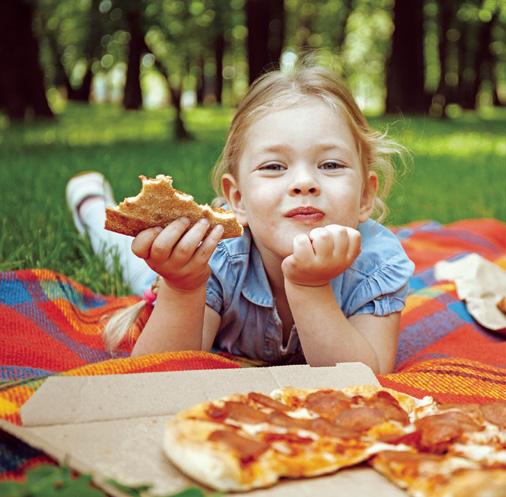

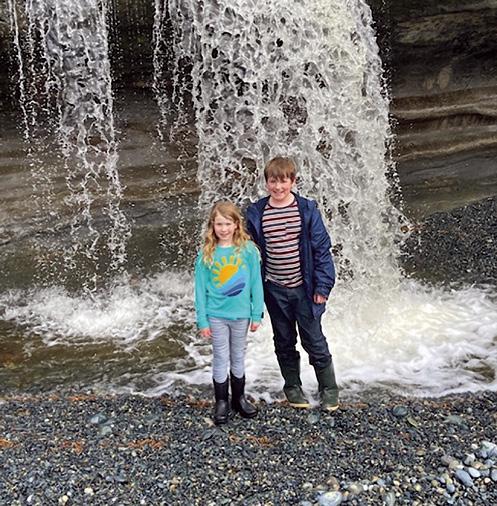



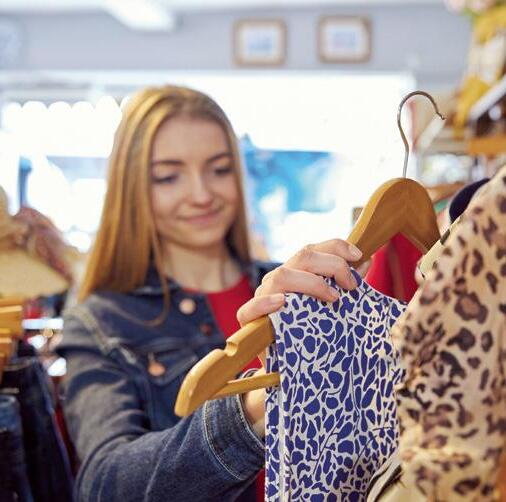


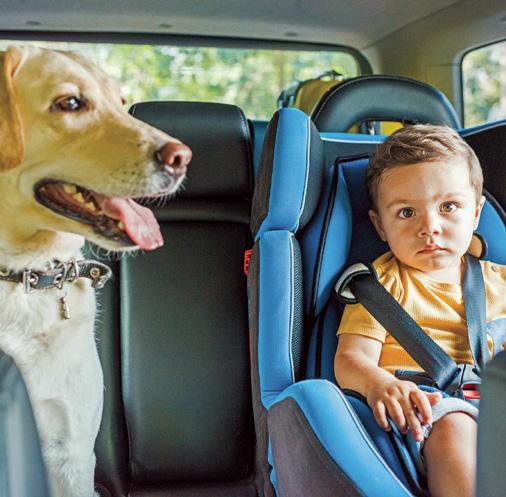

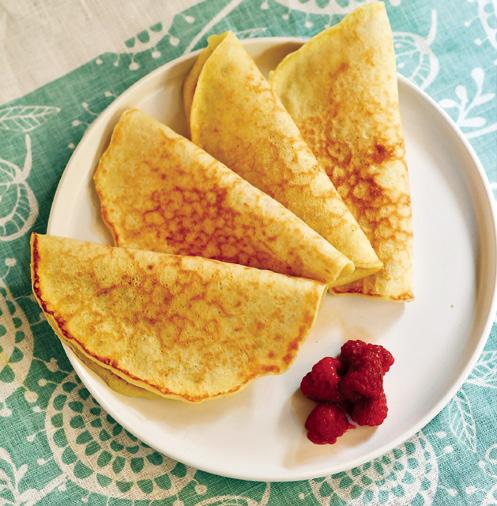
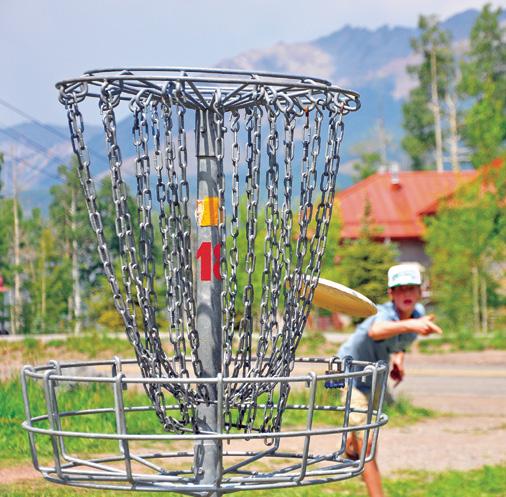




Exploration means different things to different people. What is new to you might be old hat to me. Things I’ve never seen before could be commonplace in your world. But we all have one thing in common, the need to seek out and learn about things that are new to us.
This urge is even more apparent in children. Kids see the world through the lens of a learner. They rarely have preconceived notions and are often more open to new ideas than adults.
They also love to get their hands dirty. As adults, we might do a Google search to learn about a bug, but kids will pick it up and flip it over! That’s what makes exploring and learning with your kids so exciting.
They know the best way to learn about the world around them is by using their senses. They want to get out and see the ocean, taste the homemade jelly, throw the frisbee, smell the campfire and hear the call of the chickadee.
Kids have a way of pushing you out of your comfort zone



and allowing you to find a fresh perspective. They ask questions that you would never have thought of. They push the boundaries and remind you that growth only happens if you leave the comfort of your regular routine.
Going on adventures and experiencing new things for the first time is one of the most rewarding parts of parenting whether you are taking a tropical trip on the other side of the world or exploring a new playground in your neighbourhood.
So, the next time your child asks to go for a walk, or says “Dad, pick up that rock to see what’s under it,” or “Mom, can we have a picnic in the rain?” Lean in. Let them lead the way. Take that road trip, try the new food, join the team, meet someone new, go berry picking, jump in the pool—explore!
Seeing the world through their eyes and experiencing that wonder, joy and curiosity that a family adventure brings can really ground you. This is where memories are made, where life-long bonds are formed—where love lives.
– Stacie Gaetz



Cedar Coast Field Station Society created educational opportunities to foster an ecological perspective for all ages. Learn about the ecology of Clayoquot Sound in a nature-based setting and visit the field sites on Vargas Island. Visit the website to find out more about these educationbased areas and how you can help them thrive. cedarcoastfieldstation.org
Learn how you and your family can take action to advance One Planet Living. Learn about key sustainability issues in your area, evaluate your carbon footprint and help to lessen your impact on the planet. Discover more resources, take a quiz, find events, read success stories and make your own personalized action plan. oneplanetbc.com

Dog owners know that during the summer months, it can be difficult to find areas that are dog-inclusive, with beaches and baseball fields being restricted.

So, the municipality of Saanich has created pop-up dog parks throughout the community from the end of May through the end of September! Each dog park is enclosed and offers benches, water bowls and plenty of room for your furry friends to run around and socialize. saanich.ca

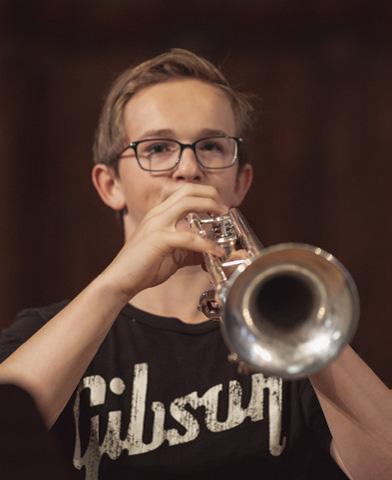



This longtime exhibition at the Royal BC Museum has recently been redesigned and updated! Developed in partnership with the First Peoples’ Cultural Council, Our Living Languages shares the history and complexity of the disrupted languages in BC. This exhibit now features more information and two new languages based on new findings. royalbcmuseum.bc.ca


Childhood 2.0
Childhood 2.0 is a documentary created by parents for parents. Learn what you can do to help your kids navigate the world online, what to watch out for and other important tips. The website for this documentary also offers books and a support community you can join for more advice and resources. childhood2movie.com

The Vancouver Island Gift Basket Co. was created in 2015 after joining forces with another established gift basket company. They love taking people on a journey to experience all the tastes, touches and sounds that BC has to offer. Find a delightful gift basket to give to anyone for any occasion.
vanislandgiftbasket.com
This unique gallery located in Port Alberni has been the place to find gifts and décor since 2013. Featuring locally made pottery and fair-trade artwork, as well as cards, paintings, prints, children’s items, bath products and so much more. Visit the blue house in the Uptown Alberni Business district or contact them online.
bluefishgallery.info


Created by a Nanaimo pet lover with a passion for taking local natural ingredients into the kitchen and creating small-batch treats that pets love. Find these cookies and dehydrated treats for your pets at various events on the island or directly from the website.
peanutbutterkisses.ca




























Iheld onto the railing as I walked down the steep stairs, balancing a bag of beach toys in my hand and a toddler on my hip. When I let my daughter down, she ran off toward the tidal pools like a spring suddenly released—bouncing back once the pressure lets up. Those were the days when I would sit on the beach and watch her run around mostly naked, covering herself with wet sand, clad only in training underwear. She loved
that beach with its warm tidepools, the crabs under rocks and sand-castle conducive sand. I loved it because the trek down the stairs, although arduous, made it seem otherworldly and like our own private oasis.
I had never been to that beach before the COVID-19 lockdown, when I suddenly found myself Googling “parks in Victoria without playgrounds” and texting my mom for recommendations of hidden gems. During
lockdown, my two-year-old and I had a routine of going to a park or beach every morning and staying out as long as we could until we raced home for a washroom and lunch.
That spring, we discovered some gems: Francis King Park, Gowland Todd, Arbutus Cove, Finnerty Cove and Telegraph Beach, among others. Often, we’d just sit on the beach singing the songs from the YouTube list that was the soundtrack to our family’s lockdown, blasting “She’ll be coming around the mountain” at the top of our lungs while the other families in the distance chuckled from the other side of the beach.
Even with the lockdown, the social restrictions and the looming existential crisis around us—those are some of my best family memories. It somehow seemed so simple—being in nature, not worrying about a packed schedule, keeping up with social engagements or rushing to activities. There was just us and the only option for entertainment was nature.
Now with a school-aged kid and the pandemic lifted, I find myself feeling stifled by schedules. There’s gymnastics on Wednesday, Sunday morning soccer, dance recitals, school fundraisers, birthday parties and playdates. Then of course there are work deadlines, workouts to keep up with and aging parents to think about. What’s more, I can’t set the agenda anymore—my daughter now has opinions on what she wants to do and a social circle of her own.
The other day after ballet and our ritual of post-ballet coffee (me) and ice cream (her), I suggested we go to a “beauty spot.” With playgrounds open again, the term “park” has come to mean playground for my daughter. My suggestion of visiting a “beauty spot” rather than a park was met with a six-year-old going on 16 pout of “I don’t want to.” Often, I’ll give in, but this time I stuck to my guns and insisted we go to a beach afterwards. “I don’t like beauty spots!”
When we pulled up to our “beauty spot” and looked
out over the beach and the ocean, we saw a regatta of sailboats with colourful spinnakers up. At first, my daughter climbed onto the car door, peering out at the boats with fascination. Eventually, we wandered over to the beach. She stuck her hand on the rocky beach and spotted a small spire shaped shell.
“You didn’t tell me there were mermaid shells mommy!” she gasped. She kept raking her fingers through the beach “and sea glass!”
“Mama, can we bring this pretty rock home? Can you put this in your pocket? Mama, you found one that looks like a heart! Let’s make Dada a collection too!”
She filled my pockets with tiny gems, a collection for each family member, and bounced across the beach to the rocky outlook. “Look, purple flowers! A secret path! Can we follow it mommy?” “Sure” I smiled. “I thought you’d like it here.”
During COVID, exploring nature kept our spirits up when everything was uncertain. Now, with the pandemic behind us, we are firmly in the era of booking summer camps at 6:30am and hardly having a weekend without a birthday party. These days, our nature adventures are a way to explore without a schedule, without a plan, without expectation. I knew she’d like the “beauty spot” but I had no idea she’d pretend the driftwood was a balance beam, the rocks were a stage and the park bench was a restaurant.
After our outings in nature, I feel so full—my shoulders lower, my breath deepens and picking up a birthday present for the next party suddenly seems less urgent. Exploring outdoors was the medicine I needed during lockdown and it’s the taste of freedom I need now.
Julia Mais is a policy and communications professor in Victoria. She looks for beauty in the everyday through writing, photography and the outdoors. She lives in a messy, cheese-filled home with her husband and young child.


Before finalizing our first US road trip, I invited my friend Kay to join me for a coffee. She’s a roadtrip pro, so I knew she would be the best person to speak to. Kay helped me to see that however crazy this trip looked on paper, it was possible. And the road-trip was likely to bring us closer together as a family unit.
Leading up to our road trip, (Langford BC to Utah—1,600 kms each way) I found myself mentioning it to almost everyone I met, bringing to light happy memories of long road trips that kind strangers had once taken. They only had good things to say about their adventures and seemed excited and in awe of what we were about to embark on.
Travel time was around 16 hours each way (or 26 hours with regular breaks).
We escaped the island via the Coho Ferry from Downtown Victoria to Port Angeles, a surprisingly affordable and stress-free passage, to and from the US (as British citizens).
We travelled southeast across Washington towards Yakima. Climbing high up
into the snowy mountains, and surprisingly staying up at this elevation for what felt like hours.
The journey pushed us to our limits. Seeing the “Welcome to Oregon” sign was very welcome—Washington is vast! We planned to stop for a couple of hours somewhere in Baker County. And when we did, the children woke up, wriggly, wanting hugs.
An hour or so after stopping, the temperature dropped considerably, our teeth were chattering. We decided to press on.
Boise was our intro to Idaho, and as soon as we passed this metropolis, the traffic vanished and I was able to enjoy the quiet open roads, with three sleeping passengers… heaven!
Seeing the “Welcome to Utah” sign was emotional. I couldn’t believe that we had almost done it! Just an hour or so away from reuniting with my brother and family for some quality time together.
After a nourishing three days of parks, bike pump tracks, water balloons and BBQs, we began our homeward journey, taking a different route home, through
Oregon—towards Portland, OR/Vancouver, WA. This extended our travel time quite a bit but descending towards the Columbia River with the sun setting in Oregon was breathtaking.
We took more regular breaks on the return journey, every one to one-and-ahalf hours during daylight hours. And it wasn’t until the light faded that I felt some anxiety. I used breathing exercises and meditation to help me regulate, including affirmations “I am safe, I am loved, all is well”—it wasn’t always easy, but this helped.
Service station coffee was surprisingly sublime, and a couple of McDonalds along the way had Play Places, which were fantastic for our wriggly littles.
We had a great time and learned a lot on our adventure. Here are some tips for how to prepare for your big summer road trip:
• Service your vehicle. Make sure you stop into a garage before you leave. Have a mechanic check your vehicle over and change your oil if needed. They can also
offer valuable advice, such as how to eject your spare tire if you need it.
• With young children, break the journey into one-to-two-hour segments. When our children would ask “How much longer?” We’d say, “Just another 45 minutes until we have a break.” Imagine saying 12 hours!
• Consider downloading an app such as the Playground Buddy App, which helps you to find playgrounds—anywhere in North America. (Thanks to Kay for this tip!)
• Research awe-inspiring stops that are worth detouring for. Shoshone Falls in Idaho was spectacular. It was a 30-minute detour, and a memorable highlight of our return trip.
• Aim to fill up with gas when you get to 50 percent full.
• Consider who you want to share your journey with. I shared our plans with 12 to 15 close connections. Giving them the opportunity to feel like they were with us on the journey.
On our return, I shared photos and audio notes with our family WhatsApp group and my close connections. I plan to host a live virtual event for friends and family who want to hear more about our adventure and will print and send photos and letters via mail, during the month of May. I will share it with my wider connections via social media once I have caught my breath!
As someone passionate about social and digital health, I urge you to be mindful that close connections appreciate hearing from you directly, not only through social media.
Shelley Ceridwen Doyle, a mom of two and a Personal Community Strategist, helps expats, digital nomads and remote teams go from feeling like passive spectators in life, to feeling more connected than ever, at the heart of their own hybrid community. Learn more about her work at communiverse.com


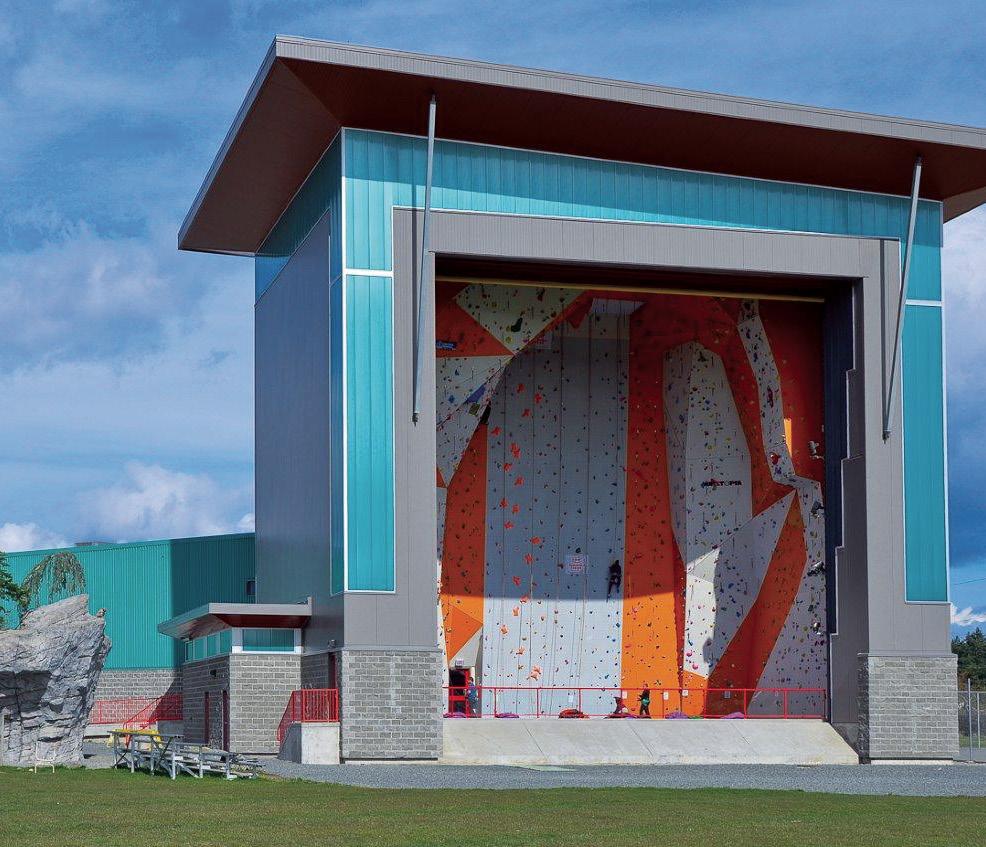
My family books six to eight camping trips from May to September each year. That’s more than 15 breakfasts and 15 suppers to coordinate. While I love the camping recipe of exploring new places and abundant fresh air, it can lead to a predictable burger-and-hot-dog-plusmarshmallows menu. (Maybe that’s what you love about camping? And that’s okay!)
However, if you are looking to switch it up from the usual “camping fare” this spring and summer, it is possible to manage your mental load and find a balance as you create a home away from home with each trip. Try these ideas to change mealtime from a headache to your happy place—Bon appétit!
I love to group camp with one to as many as six families. I create a sign-up for breakfast and supper. Everyone takes a turn to nourish one another, contribute or share a family recipe. The family who doesn’t cook does dishes. Note: coordinate so you’re not eating beans for every meal.
Meal sharing can be a challenge when there are strict dietary restrictions. If that’s the case, choose a theme for each meal and still enjoy eating together. For example, try “Burrito Night.” Each family contributes a protein filling, veggie
addition and a condiment. It’s a great way to avoid everyone packing duplicates of the same ingredients. Burritos can go either way—breakfast or supper.
A week before camping, I bake things like scones and muffins to freeze. I take advantage of fresh, seasonal fruits like cherries, strawberries, raspberries and blueberries. I even take whole fruit pies (more challenging to pack but worth the effort). Banana loaf is always a winner! I also make cookies and granola or granola bars to freeze.
For main meals make chili, curry or stew and freeze it. All work great to keep the cooler chilled. Sometimes I take pizza dough, lots of veggie toppings and cook the pizza over our portable BBQ with a flat griddle and lid.
The day before you leave, make easy breakfasts, or serve overnight oats for a snack. I like to add oats, almond milk, flax/hemp/chai seeds plus berries to a mason jar. This way I can sleep in if the kids wake up starving!
I make mini dessert jars layering cake, whipped cream and berries. Another change or sweet addition to marshmallows. They travel well, assuming you have the storage space. Plus, you can reuse the jars for leftovers or mugs.








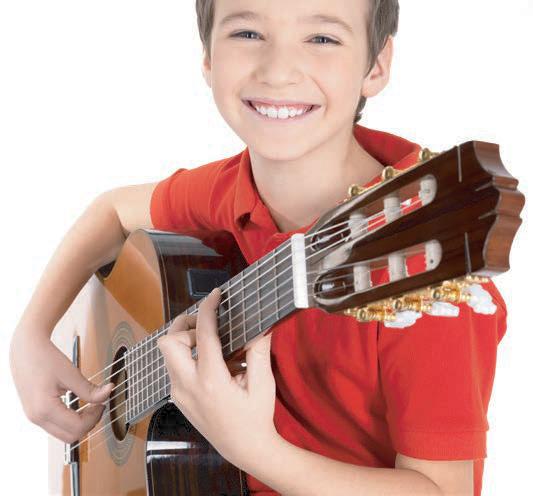




Increase the veggies and use up what’s in the fridge at the same time. A favourite dish for this is quiche. I use a storebought crust and then add spinach, peppers, cherry tomatoes, broccoli or anything else I have laying around, to my milk and egg mixture. You can make a frittata if you prefer and add potatoes to either option.
Don’t forget soup! Is rain in the forecast? Soup is always a great way to pack in veggies and you can add barley or quinoa, too. You’ll use up lots of veggies that might otherwise go off while you’re away camping.
I always pack a salad or two. Coleslaw may be the summer “go to,” but try quinoa recipes. I like quinoa with black beans, corn, peppers and cilantro. I dress it with a lime vinaigrette, pickled red onions with liquid smoke as a secret ingredient. Make a Greek version as well with cucumbers, feta, tomatoes and parsley or mint. Or try a chickpea version because all of these do well after they marinate for a day or two.
Leafy greens can also travel well in their store plastic tub or take your salad spinner full. Or wrap a head of greens in a damp paper towel and tuck it into a produce bag. It’ll stay fresh until you’re ready to use it and not wilt.
I love to cook from scratch. You may not! Grab items at your favourite local deli. We tend to do a Mediterranean night and pick up spanakopita, falafel, hummus, etc. Look for samosas, too!
While fresh and frozen are awesome, don’t forget the canned goods. We always have sustainable tuna tins, cans of Greek dolmades or bags of Ramen noodles on hand. These can help when hunger strikes.
Lindsay Coulter is a writer, educator, facilitator, naturalist, creator of culture, soul activist and mother of two. She’s the co-founder of EPIC Learning Community, a forest and nature school in Victoria BC, Program Coordinator at Victoria Nature School and in the process of attaining her certification in Equine Facilitated Wellness. One City. One Plan.

We are updating the Official Community Plan (OCP) for Victoria to meet the needs of our growing population and address the housing and climate crises. Have your say on how Victoria can grow and change into the future.
Imagine waking up to the crisp morning air, the smell of the Salish Sea and the sound of children excitedly exploring nature around them. That’s the magic of backcountry camping! But where to begin?
The thought of lugging camping gear and wrangling kids into the backcountry might seem daunting. But fear not! We’ve got you covered with our top tips and favourite local spots for an unforgettable backcountry camping experience right here in British Columbia.
Gulf Islands National Park Reserve offers backcountry campsites that are manageable with young kids, only a short hike from the parking lot for a quick escape if needed. Try a campground like Shingle Bay on Pender Island, which offers stroller-friendly access and is just a hop, skip and a jump from the parking area, with a stunning beach and orchard setting.
Located a mere 15-minute drive from the Driftwood Centre, you’re never too far from civilization.
See the adventure through children’s eyes and opt for a location that sparks their curiosity. Whether it’s a remote island, a lush forest or a scenic beach, finding a spot that resonates with your family’s interests can transform the outing into a cherished memory. Consider Narvaez Bay Campground on Saturna Island (1.7km hike), a hidden gem offering tranquillity and charm. With beautiful views from Mount Warburton Pike or wildflower meadows, it’s the perfect setting for a peaceful family getaway. Plus, during the summer months, you can drive to Parks Canada Interpretation Programs and discover the island’s rich natural and cultural heritage together. Keep your eyes peeled for marine mammals along the Whale Trail or embark on a thrilling geocaching adventure— the possibilities are endless!


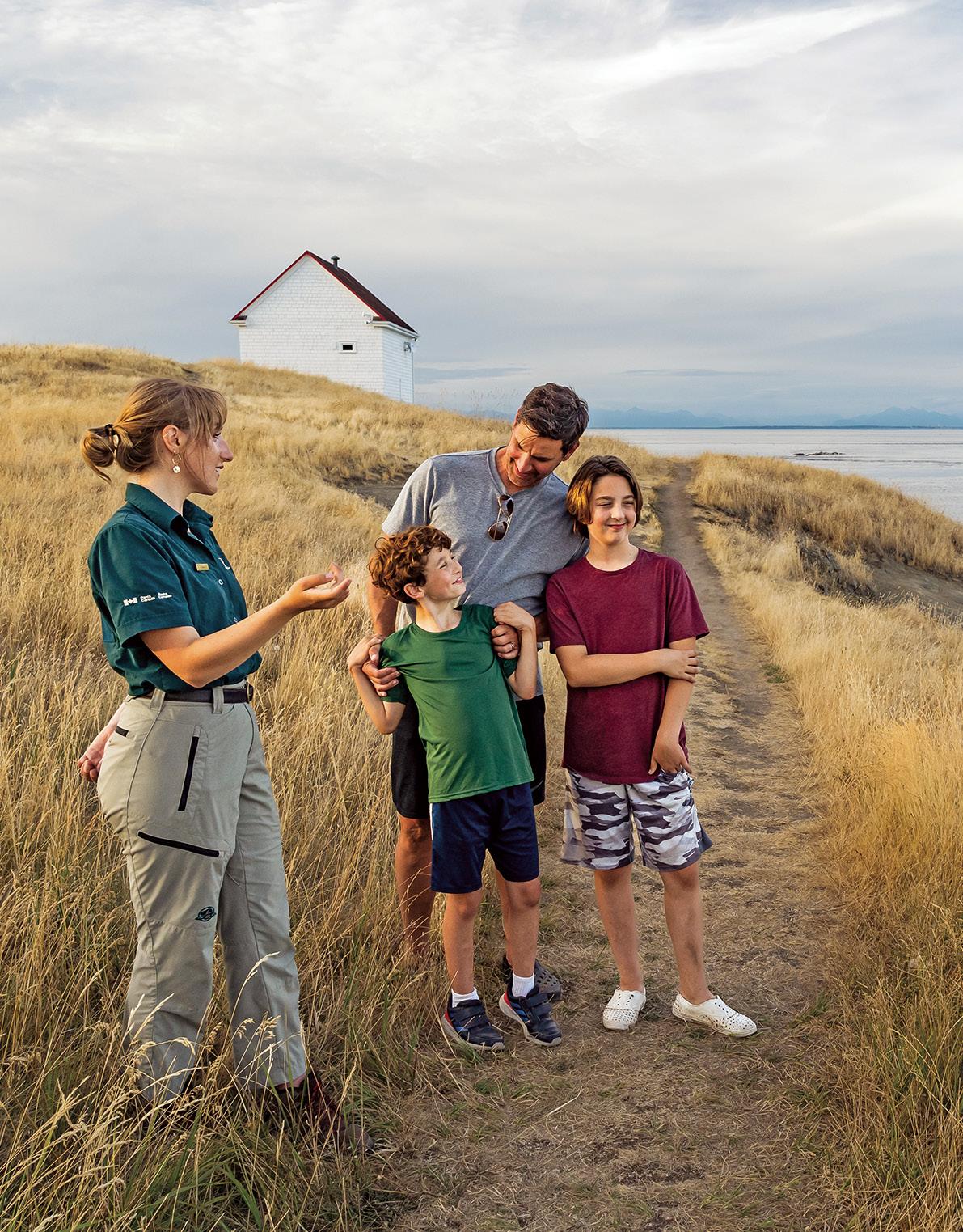
Campgrounds tend to fill up quickly during the summer months. Opting for backcountry camping provides a tranquil and less crowded alternative. Reserving at one of the two reservable backcountry campgrounds on Pender Island and Saturna Island within Gulf Islands National Park Reserve is recommended and ensures a more serene experience.
Curious about what to bring? Our essentials include ample layers for unpredictable West Coast weather, energizing snacks, a comprehensive first aid kit and binoculars for safe wildlife viewing. Before embarking on your adventure, check out Parks Canada’s Learn-to-Camp resources for expert ad vice.
Backcountry camping with young kids is all about prepara tion, patience and a sense of adventure. By planning, you’ll create memories that will last a lifetime.
So, what are you waiting for? Pack your bags, round up your little explorers and embark on an epic backcountry ad venture in beautiful British Columbia!
Parks Canada protects and presents nationally significant examples of Canada’s natural and cultural heritage and fosters public understanding, appreciation and enjoyment in ways that ensure their ecological and commemorative integrity for present and future generations. To learn about more opportunities in your area, visit parks.canada.ca




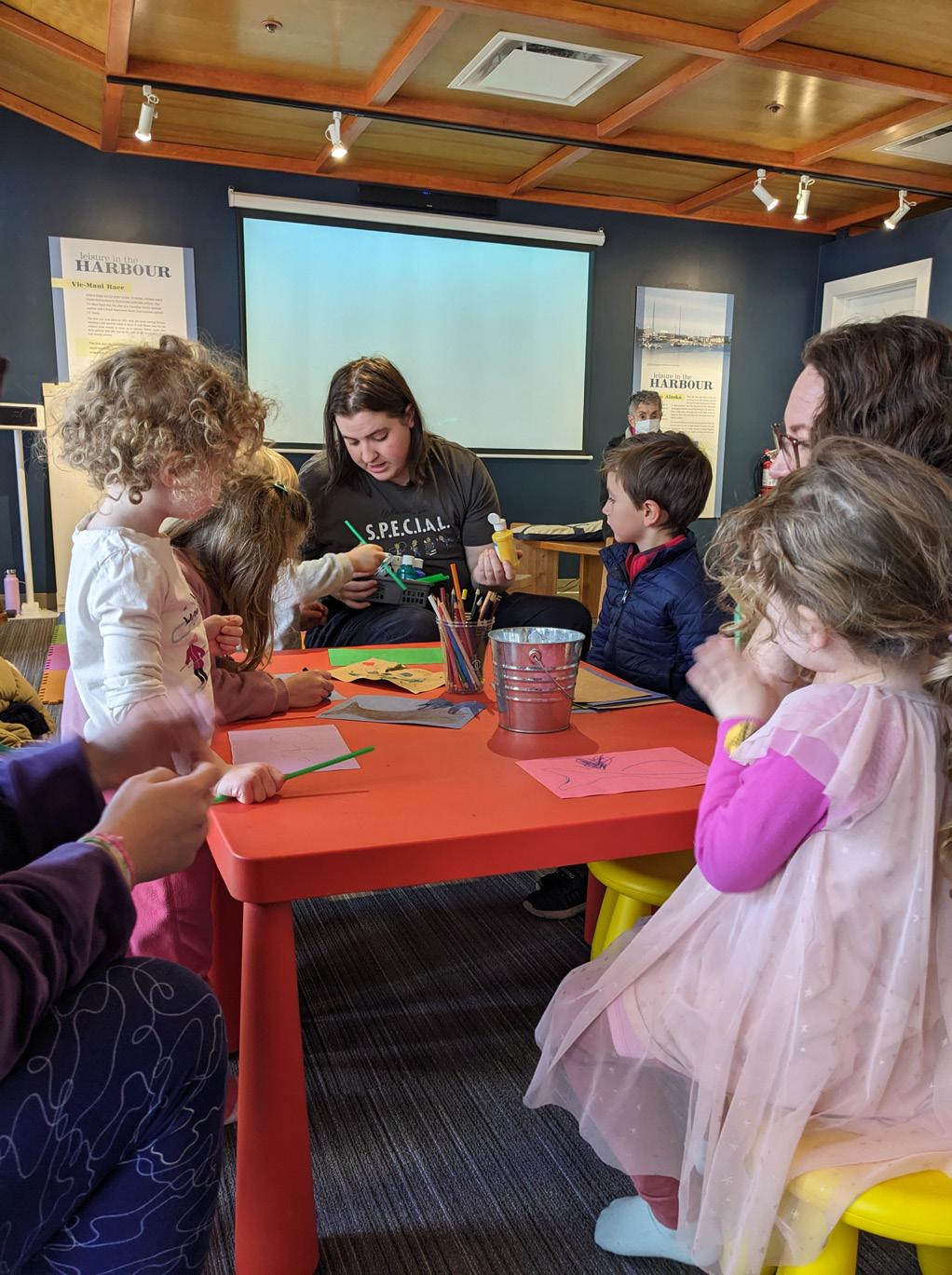

















SaturdayS 10:30 AM




Vancouver Island has world-class hiking and outdoor recreation opportunities. For many of us, it’s why we choose to raise our families here. As the mother of a toddler, I am conscious about how my safety habits now will shape my son’s habits in the future. When I plan a hike, I’m thinking about how the whole family can stay safe but also how I can model a safety mindset so that my son can develop the skills he’ll need to make the most of the outdoors later, should he choose to.
Involving our kids in hiking preparation is the best way to keep them safe and help build the confidence and skills needed for bigger adventures. Here are some tips to help you make the most of your next hike:
When deciding where to hike, getting information from the park agency or municipality that manages the trail will help you make the best choices. Check their
official website for timely alerts or trail closures and to download accurate maps. While social media, crowd-sourced hiking apps and word-of-mouth can be great for inspiration, they can be misleading when it comes to safety. Just because somebody posted a route online doesn’t mean there’s a clearly marked trail or that the area is open to the public. And we don’t want to end up bushwhacking through waist-high shrubs with toddlers in tow! Sticking to designated, sanctioned trails helps ensure you’ll be on trails which are maintained, and avoid any areas closed to the public for safety, conservation or cultural reasons.
We never expect to need a rescue, but sometimes accidents happen. Leaving a trip plan could make a major difference to the outcome of your outing should you need help. Always tell someone where
you’re going and make sure they know to call 911 if you don’t check in when you say you will. AdventureSmart, an organization dedicated to reducing searchand-rescue calls in Canada, has an app that makes it quick and easy to fill out a trip plan and send it to a contact. Consider asking your kids to help complete the prompts in the app before you leave home.
Navigation doesn’t need to be complicated, but it is an important skill to teach if our goal is for our kids to someday be able to embark on their own adventures. Involving children in activities like picking out a trail on a map, stopping at junctions to discuss which way to go and pointing out landmarks can help develop better spatial awareness—foundational for learning more complex navigation later.

4. Discuss what to do if you get separated
“Hug a tree and survive” is the phrase AdventureSmart wants us to remember. The idea is that if a child becomes lost, they should stay in one place and shelter under a tree’s canopy. Other things parents can emphasise is that if they get lost, a child won’t be in trouble, and they should make themselves visible to anyone in the area. In search-and-rescue situations, some kids don’t answer the rescuers’ calls because they don’t know the stranger calling their name or they fear punishment for getting lost in the first place. The last thing we want is for our kids to use their hide-and-seek skills to avoid being found!
5. Everyone carries a pack
If a kid is old enough, it’s a great idea to equip them with the basics they’ll need for a hike and a few extra safety items. Consider throwing in a whistle, light-weight emergency blanket and flashlight. Not only will their essentials be at hand should they need them, carrying their own pack helps foster a sense of self-reliance and encourages them to take responsibility for their safety.
6. Learn together
If you’re unsure what to pack or what to do in a thunderstorm, now is the perfect time to engage your kids and learn together. Keep the learning fun and consider roleplay or storytelling so that the joys of being outside are not overshadowed by fear of the unexpected. Check out crd.bc.ca/parks and search “being prepared” for a place to start your research.
Preparing for the unexpected can feel like a lot to think about. Starting with small hikes, repeating visits to local trails and gradually building up your skills will hopefully make planning feel less daunting and more like part of your outdoor routine. When you prioritize safety, your efforts will be rewarded with memories that foster an appreciation for adventures in the outdoors—something well worth passing on.
Adria Hussain coordinates education programs at the Capital Regional District’s (CRD) Regional Parks Division. Join CRD Park naturalists or cultural programmer on a free guided walk or drop-in event. For more information, visit crd.bc.ca

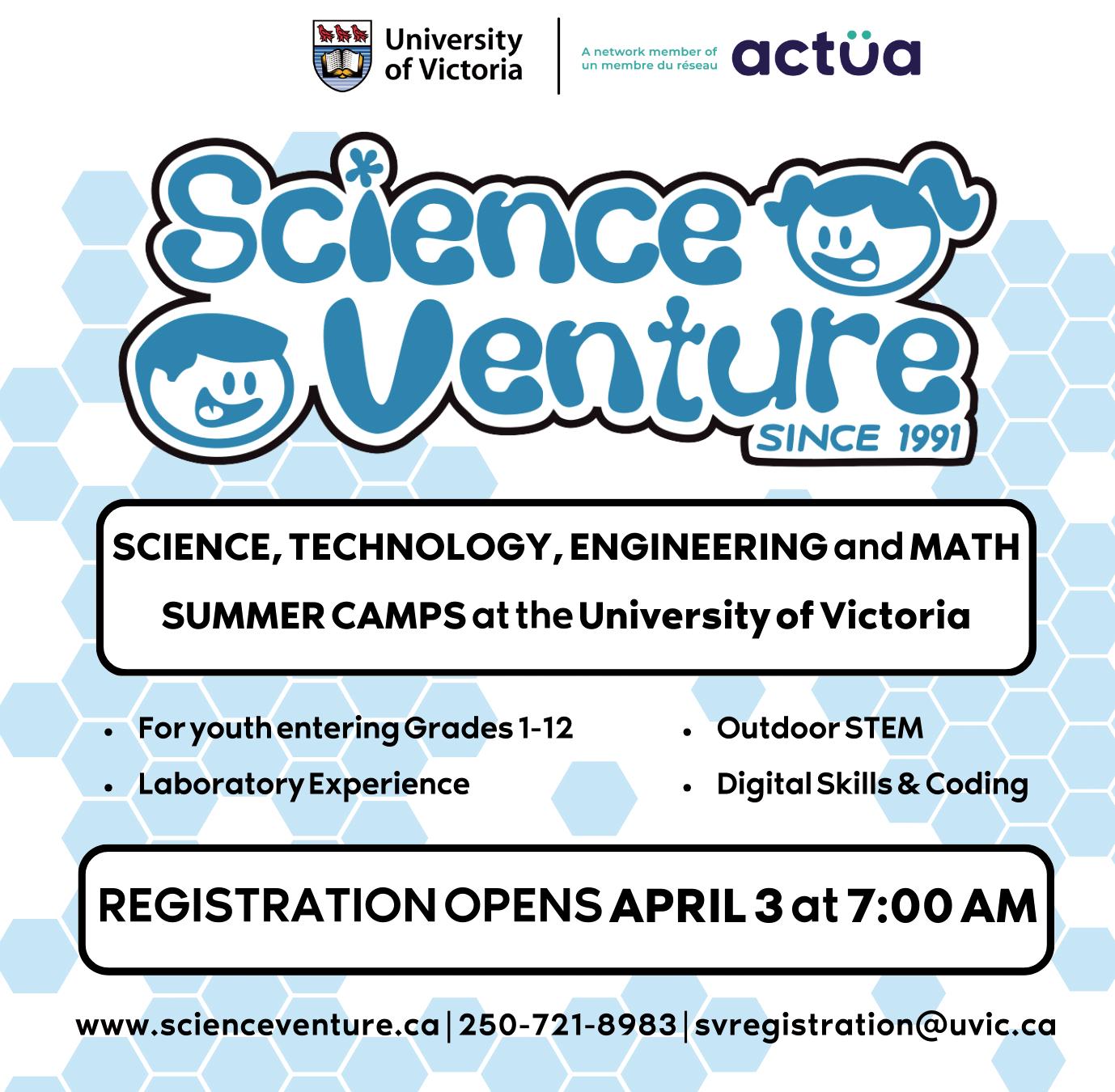
re you ready to make this summer your most revitalizing one yet? As the temperatures rise and the days grow longer, there’s no better time to explore the world of non-alcoholic beverages and discover the countless benefits and flavours they offer.
We’re aware of the drawbacks of alcohol: the calories, the fatigue, the dreaded hangovers. Yet, there’s something undeniably enjoyable about sipping on a well-crafted cocktail. Traditionally, opting for health has often meant sacrificing these indulgent experiences. But what if I told you there’s a way to enjoy a refreshing drink without missing the alcohol! As a holistic nutritionist, I’ve seen first-hand how adopting a lifestyle focused on health and well-being can transform not only your body, but also your outlook on family life.

Choosing non-alcoholic beverages isn’t just about abstaining from alcohol; it’s about embracing a lifestyle that prioritizes health and wellness. For those unfamiliar with the joys of non-alcoholic drinks, it’s important to highlight the multitude of benefits they offer. From improved hydration and digestion to better sleep quality and enhanced mental clarity, the positive impact on overall well-being is significant. Unlike their alcoholic counterparts, non-alcoholic beverages leave you feeling refreshed and rejuvenated. They spare you the negative effects of intoxication and the subsequent sluggishness, slightly problematic, especially when managing the boundless energy of super-energized kids!
By incorporating non-alcoholic beverages into your social gatherings, you promote inclusivity and acceptance. Whether it’s accommodating designated drivers, pregnant and breastfeeding guests or individuals choosing sobriety for personal or health reasons, offering a diverse selection of drinks ensures that everyone feels welcome and valued. Non-alcoholic options allow families and friends to celebrate together without exclusion, fostering a sense of unity and connection that transcends the limitations of alcohol-centric traditions.
If you’ve ever browsed through a bar or restaurant drinks menu, you might have come across the term “mocktail.” It’s now a trendy word, blending “mock” and “cocktail” to signify a non-alcoholic alternative to traditional mixed drinks.
The key difference between a mocktail and a cocktail is the absence of alcohol in the former. Mocktails are crafted to mimic the complexity and enjoyment of cocktails but without the alcoholic content. Expect to find freshly squeezed juices, infused syrups, flavoured sugars or salts and more in mocktails, all aimed at delivering a satisfying flavour experience without the need for alcohol.
Like their alcoholic versions, mocktails offer a wide range of flavour profiles. Some even feature zero-proof spirits designed to mimic the taste of traditional liquors, allowing for mocktail versions of classic cocktails like negronis, margaritas or martinis.
Here on the island, we are fortunate to have a multitude of entrepreneurs and artisans who are passionate about creating delicious and innovative alternatives to traditional alcoholic beverages.
Makes 2 servings
1 English cucumber, sliced
10 mint leaves
1 3 cup lime juice
2 tsp monk fruit sweetener
1 tsp fresh ginger, minced
1 2 cup sparkling water or as needed
1 cup ice, or as needed
In a blender, combine the cucumber, mint, lime juice, sweetener and ginger. Blend until completely liquefied. Add the ice to the blender and blend until you achieve a slush-like texture.
Divide the slush mixture evenly into glasses. Pour sparkling water over the slush.
Give a quick stir and garnish each glass with a sprig of mint, cucumber slices or a lime slice.
Serve immediately and enjoy!
The benefits of non-alcoholic beverages go far beyond simply abstaining from alcohol. By prioritizing health, mindfulness and inclusion, families can create a culture of holistic well-being that enriches all aspects of their lives. So, the next time you’re planning a get-together or just fancy a refreshing drink, consider exploring the world of alcohol-free beverages— your body, mind and taste buds will thank you!
Isabelle Bulota is a registered holistic nutritionist, recipe developer and food photographer, passionately navigating the challenges of motherhood with two vibrant teenagers. As the proud founder of SuperBorn, she guides women on their pregnancy journey through personalized nutrition counseling.
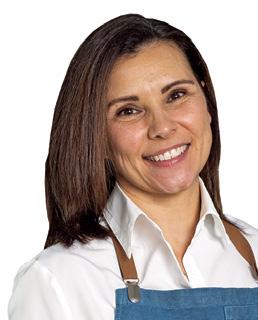

































There comes a point in every child’s life when she no longer wants her parents to pick out her clothes or styles. My daughters reached this stage well before my son and well before middle school. I’ll never forget the day my daughter told me that her style was “hobo.” I laughed when I realized she was trying to describe her “boho” style and that she mixed up the name. It can be expensive to keep up with her changing styles, especially since she started enjoying vintage clothing and expensive brands. However, VarageSale, Facebook Marketplace (and other Facebook buy-and-sell groups), the Depop app, consignment stores and thrift shops have helped to make the endless style switching more affordable. Hand-medowns from friends and cousins are also often appreciated. It can be fun to swap
clothes with friends or pass down outgrown clothes.
It is thrilling to find a flattering name brand outfit at a fraction of the price it would cost new. It can be fun to shop in-person at thrift and consignment stores. It’s also convenient to browse social media sites from the comfort of your couch (long after retail shops are closed). My neighbour warned me how addictive VarageSale shopping can be. VarageSale is also convenient because you can follow categories such as “dolls and dollhouses” and “junior and teen girls” clothing in a certain size and clothing category such as “shorts.” By following categories, you can ensure you never miss a freshly posted item. You receive notifications as soon as new items are posted in the
categories you follow. You can “heart” items to watch them and you’ll be notified if the price of an item you follow is lowered. After you message a seller that you are interested in buying something, you arrange a public meeting place (such as a coffee shop or in front of a police department for safety). You can also pick up your item from a bin on the seller’s porch. At the time of pick-up, payments are made via cash or etransfer.
Thanks to VarageSale and Facebook seller groups, I’ve grown my youngest daughter’s doll collection. I’ve also sold my oldest daughter’s doll collection through these sites. My son has enjoyed remote control car and book purchases through these sites. My children also enjoy saving their “wish list” items on the apps and then I can purchase items for their birthdays.
These sites have rules and moderators, and you can rate and review sellers. You must be aware of possible scams and ensure you aren’t sending an etransfer before you have seen an item in-person.
When I’m shopping in-person at thrift shops, I often tell store clerks “I am just browsing.” This seems to be my lucky phrase as then I find the perfect outfit to purchase for myself or my children. Some of my family’s favourite thrift stores include WIN retail shops and the Salvation Army thrift stores. At the Salvation Army, when you donate, you receive a discount coupon for your next purchase. If you have time to browse, it can be fun to look through the thrift shops.
Another way to save some money is to buy secondhand items from Play it Again Sports, especially if your child changes sports often and tries out many different options that require a variety of equipment. They will buy your child’s outgrown items as well, or you can trade in outgrown items.
It’s also great to have a shopping team. This is when you engage your friends and family members to be your personal shoppers. I collect rubber duckies, so my friends and family are always on the watch for rubber duckies at thrift stores or garage sales for me. I give my parent’s a list of items to seek out for us such as a lid replacement for a casserole dish or a certain style of glass we broke. They often find exactly what we need.
The best thing about buying second hand items is you’re keeping them out of the landfill and giving them a new life in your closet. The second-best thing is sav ing money.
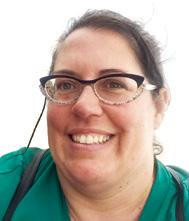
































Looking for something fun to do this summer? Why not spend an afternoon picking produce at a local farm?
Upick farms often feature berries (or pumpkins, depending on the season). The fruit is usually about the same price as the grocery store, but you are paid for your labour in the amount you sample as you pick. Little kids are particularly good at sampling more than they put into their bucket, but that’s part of the fun!
Visiting farm stands and Upick farms has benefits beyond the buckets of blueberries that you’ll get to take home. It’s a way of connecting what you eat with land it is grown on. Farm fresh produce is often fresher, tastes better and is the best way to support our local food systems.
You can find your local Upicks at bcfarmfresh.com.
One of my favourite ways to feature farm-fresh produce is by serving it with crepes. Crepes are very fun and easy to make. Perfect for getting your children into the kitchen.
• Younger children can help decided what fillings to make. They can wash fruit and vegetables, grate cheese and mix the batter.

• Older children can make crepes all on their own. Depending on their age, they can follow the recipe, and even cook the crepes themselves, leaving you free to get the fillings organized. Though traditional crepes are larger than a dinner plate, I recommend making small crepes which are easier to flip. A smaller-sized crepe means that you get to eat more than one, which is perfect for sampling a few different fillings!

Who has the best products and services that your family loves? Let us know at islandparent.ca/family-favourites-nominate
Crepes are perfect for both savoury and sweet fillings. When serving crepes for breakfast, brunch or dinner, why not have a variety of fillings so everyone can mix and match the flavours. Here are a few of our favourite crepe fillings. However, feel free to serve whatever you have in your kitchen that inspires you. Experimenting with flavour is a fun way for kids to learn about cooking.
Sweet: fresh picked berries, vanilla yogurt, whipped cream
Savoury: cheese, fresh tomatoes, fresh salad greens, sauteed kale and chard, scrambled eggs, smoked salmon
This traditional crepe batter is perfect for savoury or sweet flavours. For a sweeter dessert crepe, add 2 tbsp of sugar to the batter.
2 tbsp butter
1 cup all-purpose flour
Pinch of salt
11⁄2 cup milk
2 eggs
1. Melt the butter. Mix the flour and salt in a large bowl.
2. Add in the melted butter, milk and eggs. Stir to combine. The crepe batter will be very liquidy.
3. Let the batter sit for at least 30 minutes to fully hydrate the flour. You can make it up to two days in advance. Just store the batter in the fridge if it’s going to sit for longer than 30 minutes.
4. Stir the crepe batter before cooking. Pour a 1⁄4 cup of the batter onto a hot griddle. Flip it over when the edges have started to dry out and the centre of the crepe is bubbling, about 2 minutes. Cook for 1 more minute.
5. Serve immediately or keep warm in the oven.
Through a balance of inquiry and structure, Oak and Orca offers inclusive, supportive, personalised K–12 education for a diversity of learners.



Chickpea flour crepes (called socca) are traditional in the South of France. They are more filling that white flour crepes. Typically served with savoury fillings, this is a fun option for dinner. The addition of cumin and rosemary is what really makes these crepes stand out. However, if you think that is too savoury for your children, then simply omit them.
1 cup chickpea flour (or garfava flour)
1 cup of water
2 Tbsp olive oil
1 egg
3⁄4 tsp salt
1 tbsp minced rosemary
1 tsp cumin
1. Mix all the ingredients together in a bowl or measuring cup. The crepe batter will be quite wet.
2. Let the batter sit for at least an hour to fully hydrate the flour. If you want to mix it up the day before, just pop it into the fridge.
3. Give the batter a good stir before cooking as the herbs will float and the chickpea flour will settle. Pour a 1⁄4 cup of the batter onto a hot griddle. Flip it over when the edges have started to dry out and the centre of the crepe is bubbling, about 2 minutes. Cook for 1 minute on the second side.
4. Serve immediately or place them on a baking sheet and keep warm in the oven. I like topping chickpea flour crepes with cheese before popping them in the oven. That way the cheese will melt before serving, yum!
Emillie Parrish loves having adventures with her two busy children. You can find more of her recipes in her recently released cookbook Fermenting Made Simple. fermentingforfoodies.com

These local businesses are family-focused and committed to our community and helping you.



Aging… and the road forward. I’m 73 years old as I write this and an optimist.
As a young man growing up in the ’60s in East Vancouver, I saw a bright future, yes peace and love and all that. Unfortunately, the reality is life has gotten much more stressful with the rising cost of food, gas and housing shortages. Where can we find some humour, love, relief from everyday issues?
Recently our two grandkids stayed with us for a week. Oh, so much fun, love and especially laughter! You know that deep belly, tears-in-your-eyes laughter.
It felt so good! How can we bottle that laughter and that energy for the rest of the year?
Charming, cute kids have a way of warming one’s heart.

We went on several adventures with the grandkids while they were here.
First on the itinerary was a walk in Goldstream Park to check out the waterfall. It’s a short hike and we all enjoyed the fresh air and a chance to stretch our legs. The waterfall did not disappoint!
The rest of the week we did so much, and yes it was exhausting, but that’s alright, we’re spending time with our grandkids making memories.
If you are looking for some ideas of what to do with your grandkids, here is a list we managed to accomplish in less than seven days:
*A warning—This list is not for the faint of heart, it was, as mentioned, exhausting but truly worth every moment. Sidney Museum. When we had the kids, the LEGO Exhibit was in town. An added bonus was a scavenger hunt the museum put together so the kids could find the items and check them off their list. Our grandkids took up the challenge. We all had a blast! Entry is by donation so it’s not an expensive place to take the kids.
The Shaw Centre for the Salish Sea Aquarium on the waterfront in Sidney. The kids loved it and they got to meet “Tanner,” an octopus, climbing around his tank. This aquarium is an informative and hands-on experience.
Miracle Lanes five-pin bowling in Sidney. Our granddaughter would not be able to pick up the ball needed to play 10-pin, so we opted for five. We bowled two games, which was plenty.
Helijet Airport along Dallas Road to watch the Helijet land. There’s something about the roar of a helicopter that makes kids and those young at heart smile.
Ogden Point Breakwater. This cement structure was constructed between

1914 and 1917 and is a very popular place for tourists and locals to walk along with a lighthouse at the end to sit and relax for a few minutes. We spotted a few seals and starfish of various colours but did not spot the resident octopus.
Beacon Drive-in Restaurant. Situated across from Beacon Hill Park, this popular and famous drive-in has been voted to have the best ice cream in Victoria for the last 29 years in a row. The kids approved!
Beacon Hill Petting Zoo. We saw lots of goats, squirrels, peacocks, peahens and many other animals. Entry is by donation and the experience was very entertaining.
Royal BC Museum. Old town is back! Beach day in Sooke. We stopped at Shirley Delicious to get something to eat, then hiked down to Sherringham lighthouse and the final stop was Sandcut Beach to play behind the waterfalls. My wife and I chose to snuggle on a log, soak up the sunshine and watch the kids play.
the Gorge
the Southside so we could view the midden under the Gorge bridge, then on to the Japanese Gardens and the new Tea house (for a bathroom break).
Japanese Village restaurant. The kids got a blast out of that.
Spaghetti Factory. Very reasonable prices and very kid friendly.
Five and Dime diner in Sidney. Throwback to the good old days when prices were cheaper, and food filled your plate.
My Chosen Cafe in Metchosin. Great food and a small petting zoo in the back. Bonus: kids get free ice cream cones.
The Hands of Time: Public Art Walking Tour. The perfect scavenger hunt searching for 12 bronze sculptures by a BC artist.
Now get out there and spend some time in the sun or rain, walking, hiking, eating and enjoying life. You’ve earned it and if you’re lucky enough to have grandkids, bring them along to make some memories that will last forever. And that will nourish your soul as well!
Wayne Forseth grew up in East Vancouver. As a retired musician, he is now able to devote more time to background work, writing the occasional article on subjects of interest and playing guitar. He remains fit by going for a two-hour walk each morning and spends as much time as possible with his wife and two grandkids.


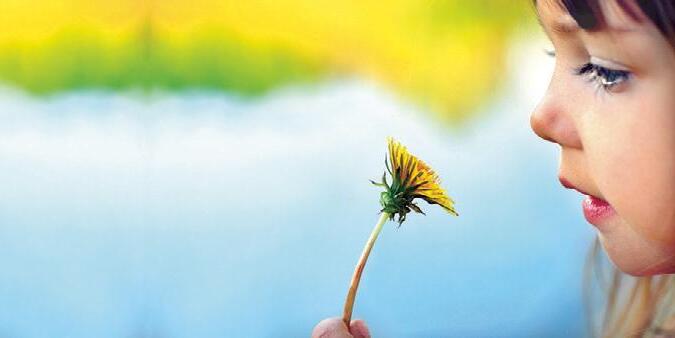





Cathedral Childcare & Jr. Kindergarten ................. 250-383-5132
ECE and specialist teachers provide an outstanding all day licensed program for 2.5–5 year olds at our Fairfield and Gordon Head locations. cathedralschool.ca

Join our learning through play preschool located in Hillcrest Elem. Our caring ECEs offer an enriched Program for 3-4 hour, 2-5 days a week and help with kindergarten transition. heoscmanager@gmail.com


ne of the nice things about summer is that the sun takes forever to set in the evening, creating tons of extra time for play and exploration. And by nice, I just want to be clear that I mean for the children who are champions of finding ways to stay up late.
In order to curtail some of my children’s evening energy so I can get them to bed at a semi-reasonable hour, my husband and I have taken to adding extra reading time to the end of our days. That means we need even more books to read, so here are a few new favourites that we’ve discovered. They all give us a chance to talk about the insects and animals we’ve seen throughout the day and the ones we hope to see soon. Maybe you and your children will like them too.

The first one is Blink and Glow by Raven Howell and illustrated by Ann Pilicer (Tielmour Press, 2024). In this beautifully illustrated story, two children, Leo and Lilly, are busy catching fireflies and bioluminescent salamanders as the stars shine above them. But as the creatures in their cages start to lose their glow, the children learn how to express their love in a better way. And, if you’re interested and feeling crafty (so maybe not if you read this right before bed) there is a craft at the end of the book, to help you and your children create your own fireflies to brighten your days. For ages 3 to 6.

Another delightful book for the littles is O is for Ocean by Greg Paprocki (Gibbs Smith, 2023). This alphabet board book will introduce your children to the wonders of the ocean around them, from anemone, to island, to zoanthids. Because the illustrations are absolutely gorgeous, your children are going to love examining each and every page. Then, if you make it to a tide pool or an aquarium with a touch pool, they might even surprise you by recognizing all the plants and animals there. For ages 0 to 3.
If your ocean-lover is a bit older, they might enjoy Ocean by Gail Armstrong (Big Picture Press, 2024). Once again, the illustrations are stunning. The rich colours and the detailed paper creations
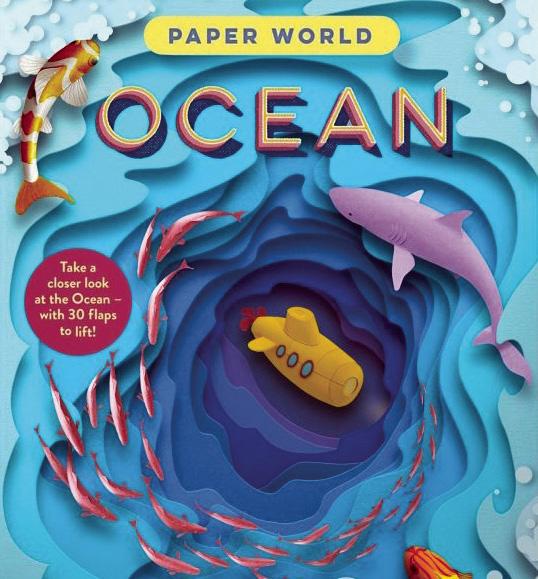

that make up each page cannot be fully appreciated or examined in one sitting. And as your children flip through the pages and lift all the flaps, they will learn about the ocean depths, Mangrove forests, tidal pools and so much more. For ages 8 to 12.
If your children prefer to hunt for critters in the soil instead of the sea, they may like to look through Extremely Gross Animals: Stinky, Slimy and Strange Animal Adaptations by Claire Eamer (Kids Can Press, 2021). As the name of this book promises, it is filled with gross facts about animals. So, if your child isn’t squeamish and enjoys learning about the
of insects and elephants, this book is for them. For ages 7 to 10.
Finally, after a day spent talking to other adults or repeating yourself for the seven millionth time to your children, you might find that you don’t want to talk at all. But you may still wish to cozy up on the couch or in their bed as you get ready for the night. If that’s the situation you find yourself in, you should check out The Last Zookeeper by Aaron Becker (Candlewick Press, 2024). This book has no words. It is told exclusively in illustrations. So, you can sit back and flip through the pages with your child as you witness a robot try to take care of animals after a flood that keeps getting worse, until the robot has to find a way to transport all of the animals somewhere new. For ages 5 to 9.
Perhaps you and your children will never encounter a glow-in-the-dark

salamander, but I hope that these books help you connect with each other and the world around you as you learn about oceans, animals and the interconnected world we live in. And maybe, just maybe, after you close the final page, your kid will actually decide to go to sleep instead of asking for one more drink of water.

Christina Van Starkenburg lives in Victoria with her husband, children and cat. She is the author of One Tiny Turtle: A Story You Can Colour and many articles. To read more of her work and learn about her upcoming books visit christinavanstarkenburg.com. Facebook: facebook.com/ and X: @Christina_VanS.



Head down to the Gorge Waterway, between Tillicum Road and Admirals Road, on Canada Day for some family fun at the annual Gorge Canada Day Picnic! Start with the parade and pancake breakfast, view some art, shop at the market, play on the inflatables, dance to local musicians, stop by the car show and finish off with the Strawberry Tea. gorgecanadaday.ca

Come out to celebrate National Indigenous People’s Day on the Lands of the K’omoks First Nation on June 21 at the beachfront site of the Frank Memorial Pole in Courtenay. There will be talks, tours, workshops, language activities, food, storytelling and dancing events and a variety of other entertainment suitable for all ages. komoksfestival.com
BC’s largest Bluegrass Festival—the Cowichan Valley Bluegrass Festival—is back again this year on June 14 to 16 at the Laketown Ranch Music and Recreation Park. This all-ages event offers a great performance lineup and the opportunity for tent camping on-site.
cowichanbluegrass.com

This year the Nanaimo Pride Society celebrates Pride from June 4 to 9. Check out the website to see a variety of family friendly events being held from the initial flag raising to the parade and festival to cap off the week. nanaimopride.ca

The award-winning Hands On Children’s Museum in Olympia, Washington is a fabulous family destination—especially for the annual Summer Splash! Festival of Fun! The summer-long event is jam-packed with new play and learning adventures each week. From animal encounters to stage performances, visiting artists and special events, there’s something for everyone.
With 150 interactive exhibits, an art studio, make space, children’s garden, lighthouse lookout and a half-acre of outdoor play space to explore, you can easily spend several hours or an entire day. There is even a free wading stream for kids to enjoy outside on the East Bay Plaza.
Mark your calendars for the Fire Rescue Spectacular on July 13! The free street fair is the ultimate firefighter and firstresponder experience for kids. Explore Olympia’s fleet of emergency vehicles, meet Sparky the Fire Dog, climb aboard vintage fire trucks, experience the spray gallery, take the junior firefighter challenge and more. Inside the museum will be wacky Dr. Science demos and special activities where kids can learn how to start a campfire and basic first aid techniques.
Additional festival highlights include a 25-foot rock wall





















How can organizations better support and engage newcomers in their summer programming?
Organizations like the Inter-cultural Association of Greater Victoria (ICA) are leading efforts to empower newcomer youth through inclusive and impactful summer programs. In 2023, these initiatives not only provided recreational opportunities, but also served as platforms for cultural exchange, community engagement and youth empowerment in their communities.
In Victoria, newcomer youth received priority access to summer programs through the ICA. Thanks to government funding and facility and equipment support from the City of Victoria—and partner agencies like Power to Be and Greater Victoria Naturehood Society, among others—these programs offer an array of activities, ranging from sports to cultural events, at minimal to no cost for participants.
“We have summer camps for our elementary- and middleschool-age youth, and for the older youth, we go camping.
We have many evenings of just playing in the park, biking programs, food and garden programs and just exploring Victoria,” says Gita John-Iyam, ICA Youth & Family Services Coordinator.
“We want to encourage kid-led sessions, meaning that the program leads provide the equipment and space for youth to be active while they interact with one another and build friendships and do their own thing, play their own games. We make sure that it’s a safe space like a park and we bring snacks, lay out equipment and say, ‘Go and… play with your friends!’”
In 2022, a mentorship program led by Sport for Life, was also offered to 15 newcomer youth from three different organizations, including those from the ICA.
“It was nice for the youth to understand how important activity and movement are in their own life, and also think about their community,” says John-Iyam.
“Many of the youth who participated in the mentorship

Good luck paper and scissors, we’re going to win every time.


















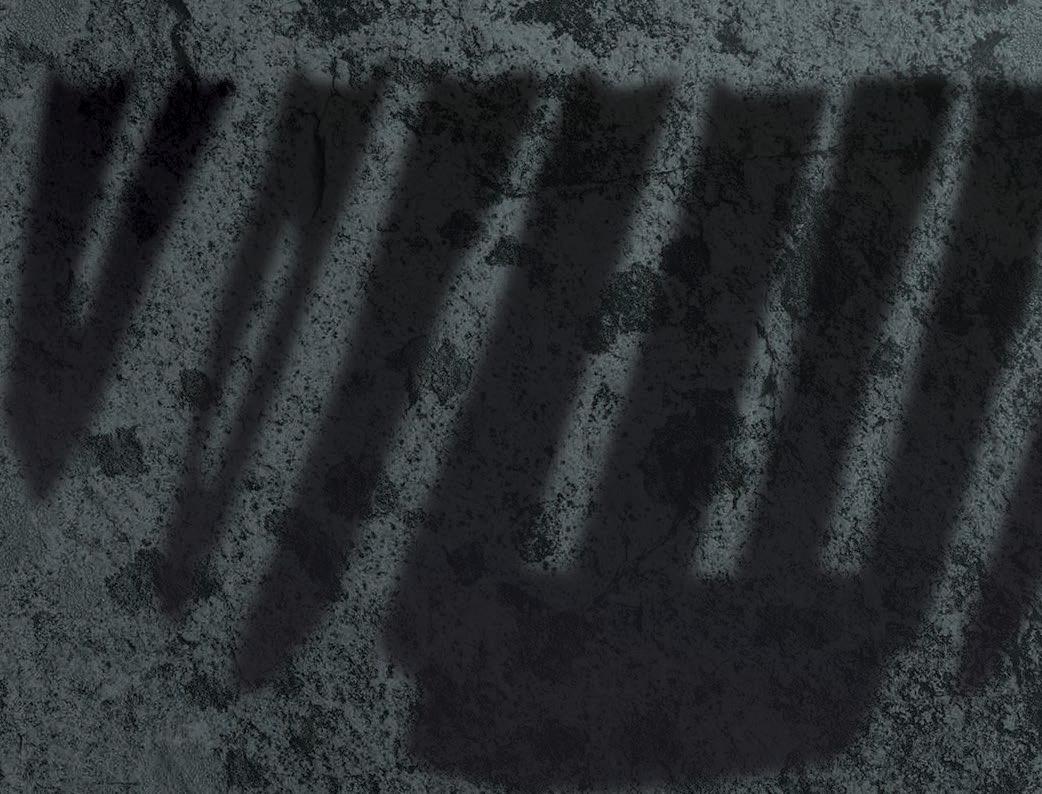
May 10, 2024–Jan 5, 2025
rbcm.ca/stonehenge











program have leadership aspirations, so it was nice to get them that training. Many came back and volunteered at our camps and they still volunteer today.”
ICA also supports participants in applying for funding through KidSport and JumpStart, so they can access local sports programs on a longer-term basis, like soccer or gymnastics.
When asked how to best support newcomer youth and provide programming that they will engage in, John-Iyam noted that it is primarily about having fun, community-oriented spaces for the youth to gather, and listening to the youth themselves—having them decide what a meaningful opportunity would be when it comes to activity and having a variety of activities for different abilities and interests.
This mindset helped ICA implement a climbing activity, with passes made available to a local climbing gym, and opportunities to try yoga at a downtown studio. For ICA youth participant Eman, her passion and enjoyment of climbing today was sparked through an initial homework club ICA hosted at her high school.
“I don’t think I had ever heard of rock climbing before. Honestly, I thought it was going to be so scary or hard, but I said, ‘I’ll give it a shot; I might like it.’ I went to the climbing program, and everybody there was so happy, welcoming
and nice. I started to come more often with friends and bring more people,” she said.
Eman is climbing two to three times a week through the ICA.
“I never expected I would like it so much, that it would be one of my favourite activities to do with my friends. I’m not a professional climber, I do it for fun—and I’m really happy with it!” she says.
Born in Egypt, Eman moved to Canada in 2019 with her family. Since arriving in Victoria, the ICA has provided her with incredible opportunities to try new things and meet new people.
“It’s so nice that we, (newcomer families and youth) have them—I’m really grateful for that. The people at ICA are really kind and welcoming. I’m thankful for them,” she said.
For more information, visit icavictoria.org .
Sport for Life is a catalyst for change both nationally and internationally within the sport and physical activity ecosystem. As a recognized nonprofit organization, it collaborates across sectors to ensure everyone has equitable access to quality sport and physical literacy. Through innovation, inclusion and integrity, Sport for Life aligns its work with the UN’s Sustainable Development Goals, creating lasting, positive impacts.
Ihave a new grandson! Well, he’s not that new, he is more than 15 months old now. But he still fills me with awe and delight, and I know he will continue to do so forever. I am also looking forward to all the things he will teach me, about being a grandmother, and the world and how to move through it.
His mother, Chloë, my daughter-in-law, has been teaching me since we first met many years ago. She has taught me about baking sourdough, making chickpea tofu, dying yarn and colour work in knitting. I am always amazed by the way she teaches herself new skills. Motherhood is no exception. Chloë has taken the role on so gracefully and thoughtfully. I want to pass on one of Chloë’s most novel ideas. As she came out of the fog of the first few months of motherhood, Chloe realized how isolating it was to be at home, alone with a baby. Her partner (my son Simon) was back at work, all day, and she was going to have to find some mom friends to hang out with.
Those “mom friends” we make when our children are small are a very important part of our adjustment to our new role as a parent. In a isolating, solitary occupation, such as caring for a small child, they are our “colleagues.” If you started a new job as an accountant, rocket scientist or esthetician, you would want to make friends with other folks who do the same thing, face the same challenges and find solutions to the same problems. You need to know people who understand the life you lead and share the same ups and downs. However, finding parent-colleagues isn’t easy. Especially when you are a parent for the first time. You can’t just go up to a pleasant-looking parent in the park and say what you did in kindergarten: “Will you be my friend? I like the colour of your baby-carrier. Mine is purple too.” (Although, I’m sure that might work in some cases. I would find it charming!)


You feel you should do something more sophisticated, more grown-up. You might feel shy in a way you have not for a long time. This is new territory.
Then you meet someone nice, you chat with them, but you find that by next week when you show up at the same play group, you have forgotten their name. Or you go back to the same stroller-fit class week after week, and they never show up again! You missed your chance to make a friend.
Chloë drew on her experience of networking in other contexts and decided to make a business card for her baby. She

used one of the many online business card designing websites to design and order cards that had her baby’s name, as well as his parents’ names, their phone numbers and email address. Then, when she met a group of parents, she could hand her “family cards” around. It doesn’t guarantee they will call you to go for coffee, but it gives you a chance to connect. Chloë is back at her full-time job now, and my grandson is at daycare, but those family cards are still being used. Simon has handed them to other parents at daycare and music class, now that “play dates” are becoming a thing.
Business cards are not costly to make, there are several companies to choose from online, and designing the card is a great activity to do while you are nap-trapped. Make some cards, today and get out there! Develop your community of parents that will support you as you do this important but exhausting job.
Eva Bild is a childbirth and lactation educator and grandmother. She is the founder of Mothering Touch, where she continues to facilitate Baby Groups on Tuesday and Thursday mornings. Come and join her. Learn more at motheringtouch.ca.


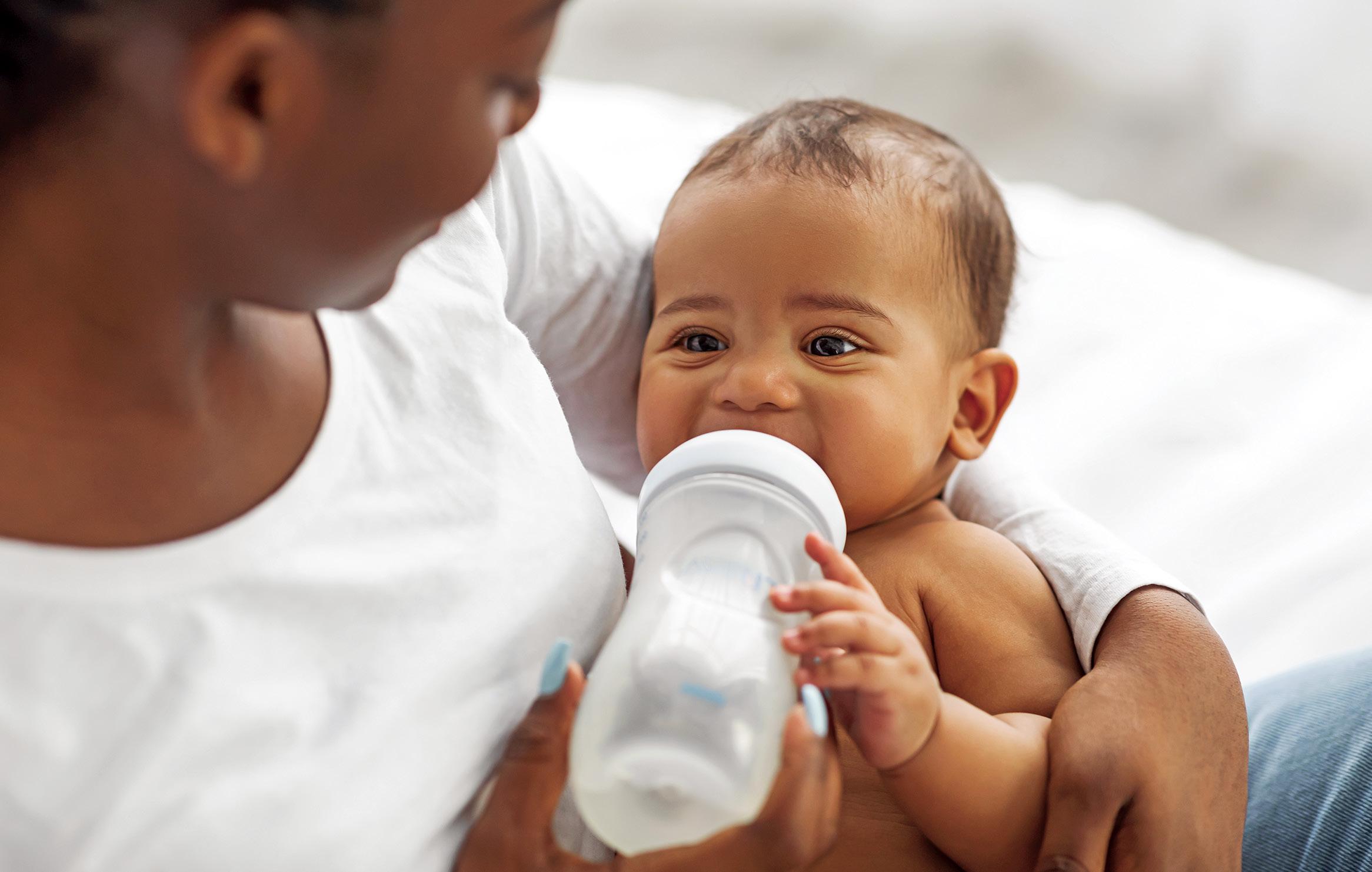
Fed is best. Plain and simple.
New parents are feeling the pressure to feed their newborns “the right way.” Pressure from social media, pressure from friends, pressure from family, pressure from health providers and most devastatingly… pressure they put on themselves.
I struggled breastfeeding my children, who are now in their teens. I had a head full of professional information, as I was working as a public health nurse in a rural community, and promoting breastfeeding was a big part of my mandate. Even so, I found a disconnect between my knowledge and practical experience. I had several challenges with my first: engorgement, nipple damage, mastitis and sore nipples when I became pregnant again.
Despite these many challenges, he fed like a champ and for the record, he seems to be okay today. Though he was diagnosed with a milk protein allergy, it faded with time, and soon enough he could happily eat ice cream.
My daughter was a different story. Breastfeeding was certainly easier the
second time around, but wow, was she ever a challenge to wean!
Yes, I found breastfeeding challenging and stressful at times, but it was something I wanted to do. There were two things that were instrumental for me to get through my challenges with breastfeeding: I was confident that I could do it and I was supported by my husband and extended family.
Let’s tie this article back to the theme explore. I took myself to an uncomfortable place, professionally and personally. I explored motherhood in a way that would have been familiar to my grandmother’s grandmother, all the while with an eye on the latest research. Here are the tips I would like to pass along from that exploration, from both those points of view:
First, ask yourself: What does infant feeding look like for your family? There is such a flexible continuum from exclusively breastfed to exclusively bottle-fed infant formula. Plans change, goals change. Who is there to support you in your decisions and goals?
Second, trust yourself. You know your baby better than anyone. Lean on your family and friends for support. Some jobs can only be done by mom, most others are up for sharing. If you are up multiple times at night breastfeeding, pumping and/or preparing infant formula… let them help during the day. Seriously, someone else can do dishes, meal prep, grocery shopping, pharmacy runs. Can someone oversee feeding you? You need fluids and calories as you give fluids and calories to your little one. If using alternative feeding methods (spoon, cup, syringe, bottle) and providing expressed breast milk (EBM) or infant formula, who will prepare and clean supplies? You also need rest. I’ll say it again, you need rest. No, really, you need time to rest.
Third, ask for help. There is a broad community willing and waiting to help you if you would like support with new skills like latching, positioning, breast compressions, hand expression or paced bottle feeding, reach out. These skills take time to learn; it’s work. Our grandparents who may have grown up
with infant siblings, or older siblings with young children, learned by watching and helping. Many of us born later haven’t been so fortunate, but we can learn by asking and listening (or reading). Here are some community supports you can call: your healthcare provider (maternity physician, midwife, family physician), your local public health unit, La Leche League and/or lactation consultants. Public health nurses may offer infant feeding support at the health unit, at home or at Infant Feeding Clinics. La Leche League may have online or in-person group meetings and have some great online resources. Lactation Consultants can be found through BC Lactation Consultant Association and may be covered by some extended health benefit plans. Also, if you are pregnant, consider learning about infant feeding options before you have your baby.
It is important to feed your baby, of course it is. It is also very important to ensure that parent(s)’ needs are being met. Everyone in the family needs NESTs: nutrition, exercise (or at least some fresh air!), sleep (even if it’s broken sleep) and time to themselves (to feel like yourself again). This ensures the physical and mental health of everyone in the family.
Best of luck as you explore your infant feeding goals!




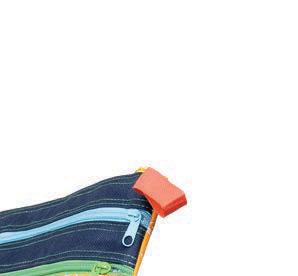




With the arrival of warmer days and the sun shining more frequently, many families are seeking easy, free and enjoyable outdoor activities to welcome the spring season. Have you considered birdwatching? Here’s why birdwatching here is an ideal springtime activity:
Accessibility for All: Birdwatching is an inclusive activity that people of all
educate oneself and one’s family about different bird species, their behaviours and their roles in the ecosystem, fostering a deeper appreciation for wildlife and conservation efforts.
Health Benefits: Engaging in birdwatching can serve as a gentle yet effective way to get moving and enjoy the outdoors. The activity promotes physical
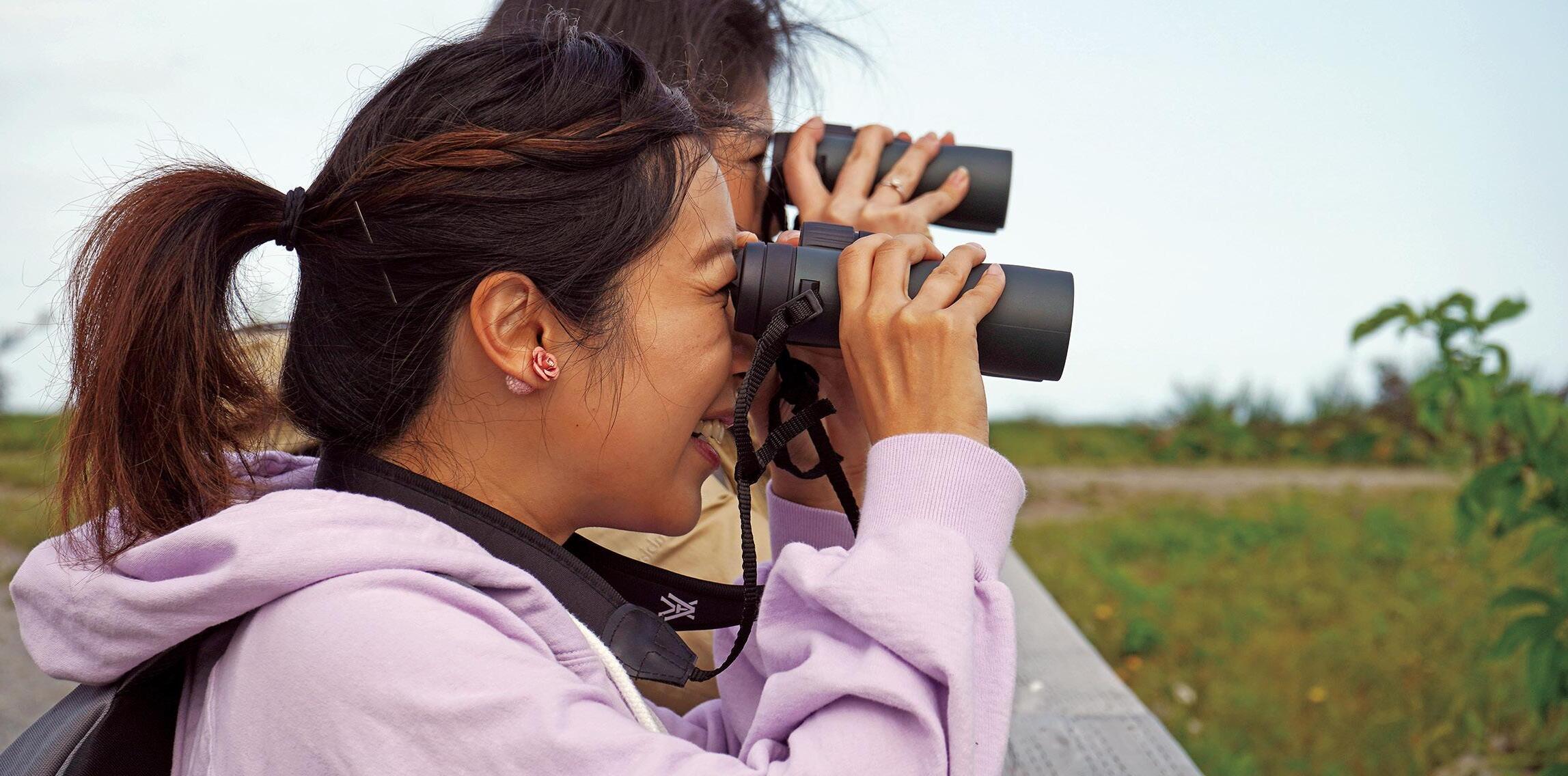
ages and abilities can enjoy. With the aid of bird identification apps such as Merlin Bird ID and Audubon Bird Guide, even beginners can quickly learn to recognize various species and their songs, enhancing the birdwatching experience.
Diverse Ecosystems: Vancouver Island’s unique geography features a mix of coastal shores, dense forests and urban parks, creating a diverse habitat for a wide range of bird species. This variety ensures that each birdwatching trip can offer something new and exciting, making it a continually engaging activity.
Peak Migration Season: Spring marks the peak migration period for many bird species. This timing means visitors have the chance to observe an impressive array of migratory birds as they stop on the island during their long journeys. It’s an excellent opportunity for spectacular sightings.
Educational Value: Birdwatching on Vancouver Island offers valuable learning experiences for all ages. It’s a chance to
health through walking and enhances mental well-being by encouraging mindfulness and reducing stress.
Vancouver Island North Bird Trail winds through several lively communities, including Port Hardy, Port McNeill, Alert Bay and Port Alice. Renowned for its diverse birdlife, this region boasts exceptional birdwatching opportunities. Key highlights include the Quatse River Estuary Trail & Viewing Platform in Port Hardy, where visitors can immerse themselves in the ecological significance of the Hardy Bay area. With over 160 bird species year-round and up to 60 species of waterfowl during winter, this habitat is a vital stop along the Pacific Flyway. The Alert Bay Ecological Park on Cormorant Island offers another prime location for birdwatching, featuring diverse terrains, marked trails and opportunities to spot Northern flickers and bald eagles amidst its lush landscapes.
Situated just 15 kilometres from downtown Victoria, the Langford Bird Trail Outpost offers an accessible gateway to nature, ideal for family outings and birdwatching enthusiasts. Langford’s diverse environments, from tranquil lakes to forested estuaries, create ideal settings for observing a wide array of bird species. Among the prime spots for birdwatching are Langford Lake, known for its vibrant community of waterfowl, and the majestic forests of Goldstream Provincial Park. Amongst the towering evergreens, birders can spot species such as Steller’s jays, chickadees and kinglets and in the estuary keep an eye out for species such as bald eagles and great blue herons.
Located just a short drive from Langford, Sooke on Vancouver Island’s southern tip is an ideal outdoors destination with its unique coastal and forested environments. Visitors can explore the Sunriver Nature Trail, winding through old-growth cedars alongside the Sooke River, or the tidal shores of Whiffin Spit, known for spectacular seabird sightings. Here, bird watchers may spot a variety of species, from the elusive barred owl to the charismatic purple martin.
Located on the wild Pacific coast, Tofino offers diverse coastal ecosystems ideal for birdwatching. A favourite location for locals and visitors is the Tofino Mudflats Wildlife Management Area, known for migratory species like the dunlin and resident bald eagles. The spring migration brings marbled murrelets and common murres to the area, enhancing the exciting wildlife viewing opportunities. Chesterman Beach, with its stunning sandbars and coastal views, is another prime spot for observing sandpipers and pigeon guillemots.
on Vancouver Island. Learn more at bcbirdtrail.ca




Ministry approved BC curriculum Kindergarten to Grade 12 program
Contemporary Indigenous Studies 12 available for enrollment
Full time or part time available Grade 10 to 12
Adult learning options
Grade 8 to 12: over 50 course options
Innovative learning management system
Experienced online learning teachers
Opportunities for self-paced, flexible, convenient learning
Direct teacher support available
Develop communication and technical online skills registering full-time or for a single course